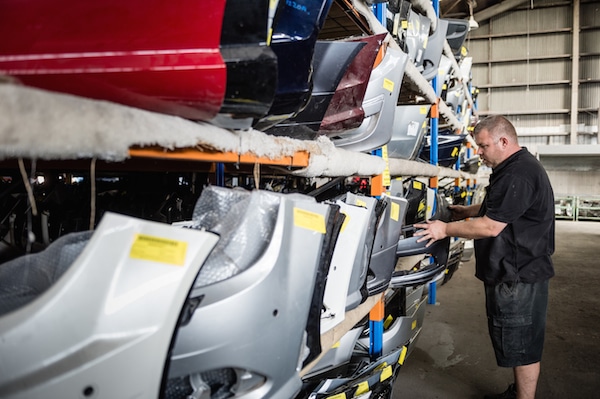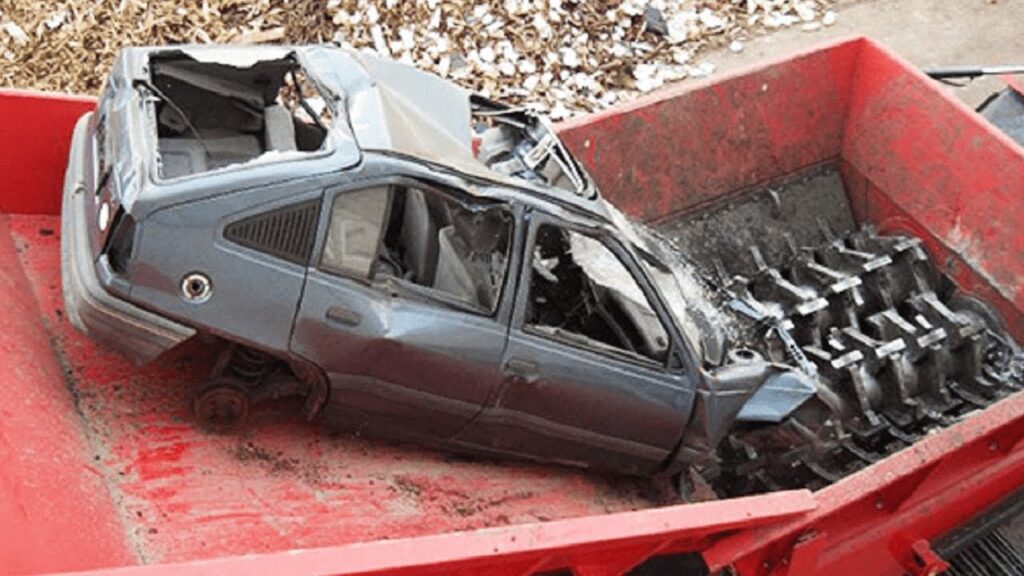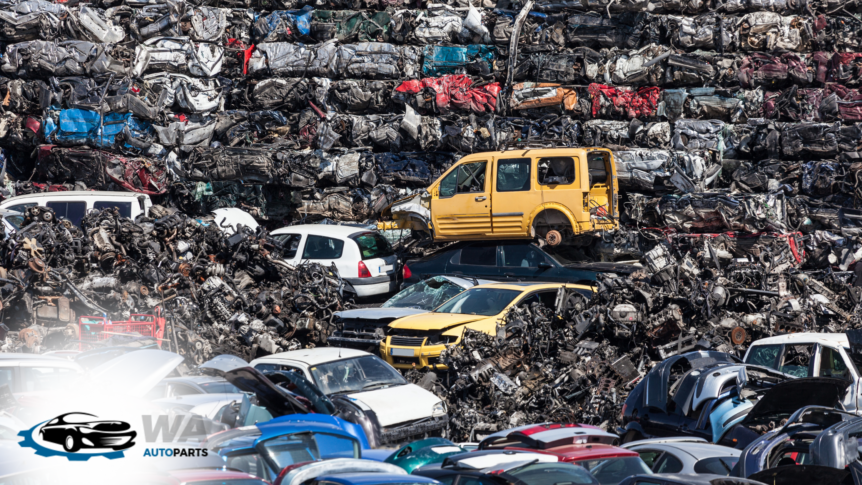In this article we deal with the question: “How is a car disposed of?” – Since the 1970s, there have been laws in Australia that prescribe recycling. The disposal of cars basically goes through the following five steps:
- Liquid materials are removed
- Recyclable car parts are removed for resale
- The car is pressed and shredded
- The shredded parts are sorted
- The sorted parts are then further processed
Pre-Disposal Steps
Preparing for Car Disposal
Before you can dispose of your vehicle, there are several important steps to ensure the process goes smoothly and without any hitches. Here’s a handy checklist to guide you through:
- Gather Necessary Documents: Start by collecting all the essential paperwork. This includes the vehicle registration, title, and any documents related to outstanding loans or leases. Having these documents ready will streamline the disposal process.
- Notify the Authorities: Inform the relevant authorities, such as the Department of Motor Vehicles (DMV) or your local Transport Agency, about your intention to dispose of the vehicle. This step is crucial to avoid any future complications with the vehicle registration.
- Remove Personal Belongings: Make sure to clear out all personal items from the vehicle. Don’t forget to remove the vehicle’s registration and insurance documents as well.
- Check for Any Outstanding Fees: Verify if there are any ongoing fees associated with the vehicle, such as parking tickets or tolls. Settling these fees beforehand will prevent any unexpected charges.
- Determine the Disposal Method: Decide how you want to dispose of the vehicle. Whether you choose to sell, trade, or recycle it, having a clear plan will make the process more efficient.
By following these steps, you can ensure a hassle-free vehicle disposal experience.
To 1: Liquid materials are removed
A car has many liquid substances. These have to be removed before the actual car disposal. This is because car disposal is mostly mechanical. I.e. things are shredded, pressed, sorted. If liquid materials are not removed from the beginning, there is a risk that they will flow out as the car scrapping process continues. However, since most of the liquids in the car are unnatural mixtures, there is a risk of environmental pollution here. Therefore, before any car recycling, the very first thing to do is to pump out any form of liquid from the car or dispose of it specially.
Example engine oil
This includes, for example, engine oil. The engine oil is not only emptied for car scrapping. Also the engine oil must be changed already before that constantly. Therefore, almost all car repair shops offer the oil change service. The oil must be disposed of before the car is scrapped, so that the oil can be disposed of in a controlled manner. In scrap yards, as well as in car repair shops, there are special oil disposal devices. Here, the old oil is collected and specially taken for recycling, where it can be further processed for reuse.
Example windshield water
Among the somewhat less toxic wastes is the water in the windshield water tanks. This is usually normal water mixed with cleaning agents or fragrances.
Example cooling water
Engine water is also pumped or dripped out. The water is used to cool the engine, so it is usually called cooling water. This is usually distilled water – i.e. pure H2O without minerals, as is the case in drinking water, for example.
Among the most risky liquids in the car, which must be drained before scrapping, is the following
Example gasoline or diesel
The remaining gasoline or diesel that is still in the tank. This is also emptied with a pump. However, the gasoline cannot be used without further ado because it is contaminated. In order for the gasoline to be used, it must first pass through a filter in which the foreign substances are removed.
Re 2: Recyclable automotive spare parts are removed for resale.
A car consists of approximately 10,000 parts. The individual parts vary from manufacturer to manufacturer. There are no universal parts in a car. An essential factor for the resale of a spare part is the residual value. This is influenced by two main factors. On the one hand, there is the question of how far the spare part has been used up. If the part is too old and too worn, it no longer has a high residual value. On the other hand, the availability of a spare part also plays a major role. If a car manufacturer becomes insolvent and no longer produces, then the individual parts are usually only available at the car scrap yard. Therefore, the spare parts on the car are checked for residual value before the car is scrapped.
The spare parts that are most removed before the car is scrapped is the catalytic converter. There are rare metals in the catalytic converter.
The rims are also usually not suitable for car scrapping.
What is actually almost always removed is the old airbag. The airbag contains explosives. That’s why you can’t scrap the airbag with the car. In the scrapping process, an explosion would cause great damage and possibly harm man or machine.
After removing all parts that have a residual value, the actual disposal can begin. All other spare parts, which are not so valuable, remain in the car.

To 3: The car is pressed and shredded
Not only the car body goes into the press, but the car as a whole with all the spare parts that have not been removed. The press has a practical reason: to facilitate transport. Since not every car scrapyard has its own industrial shredder, the car must be prepared for transport. The stronger the press is, the more cars can be transported at the same time and the cheaper the transport becomes.
In most cases, the windows also belong to the spare parts, which are not so valuable and are therefore also disposed of. In the press then the disks burst.
The shredder crushes the car into very small parts. In small form, the remaining parts are much easier to recycle.
To 4: The shredded parts are sorted
The first sorting step immediately after shredding is to hold a magnet to the shredded small parts. The magnetic small parts are caught by this magnet and sorted out. Anything that is magnetic, any form of steel or iron is sorted out. These magnetic small parts are transported to the steel mill. There they are melted down and prepared for reuse. This is the bulk of a car.
In the further process, the shredded parts pass through various sorting mechanisms. Ultimately, at the end of each car scrapping process, 10 different materials are created:
- Steel
- Aluminum
- Plastic and rubber
- Lint – from seat covers, etc.
- Metal and plastic
- Small cables from vehicle electronics
- Heavy metals
- Large plastic parts
- Electrical components
- Glass splinters and sands

To 5: The sorted parts are then further processed
The materials mentioned above are each further processed. Thus, each car, which is scrapped in the car disposal, is completely reintroduced into the raw material cycle or recycling. That is why this process is called car vehicle recycling in technical language. We have also written a blog post where we distinguish the terms car disposal, car recycling and car scrapping from each other and explain why the whole thing should actually be called car recycling.

Recycling and Environmental Impact
The Recycling Process
Car recycling is not only a responsible way to dispose of a vehicle but also an environmentally friendly one. Here’s a breakdown of the recycling process:
- Collection: The first step is collecting the vehicle from the owner or a designated collection point. This ensures that the vehicle is properly accounted for and ready for the next steps.
- Dismantling: Once collected, the vehicle is dismantled. Hazardous materials, such as batteries and tires, are carefully removed to prevent environmental contamination.
- Shredding: The vehicle is then shredded into smaller pieces. This step helps in separating the metal from other materials, making the recycling process more efficient.
- Melting: The separated metal is melted down and transformed into raw materials like steel and aluminum. This process reduces the need for new metal production.
- Reuse: Finally, the raw materials are reused to manufacture new products. This step closes the recycling loop, contributing to a more sustainable production cycle.
Environmental Benefits of Car Recycling
Recycling your vehicle offers numerous environmental benefits, making it a crucial practice for sustainability:
- Conservation of Natural Resources: By recycling, we reduce the need for primary production, conserving natural resources and minimizing the environmental impact of mining and processing.
- Reduction of Waste: Recycling significantly cuts down the amount of waste sent to landfills, thereby reducing the environmental harm caused by waste disposal.
- Energy Savings: The recycling process consumes less energy compared to primary production, leading to lower greenhouse gas emissions and helping to mitigate climate change.
- Pollution Reduction: Recycling reduces the release of pollutants into the environment, which in turn improves air and water quality.
By choosing to recycle your vehicle, you contribute to a more sustainable future and help reduce your environmental footprint.




